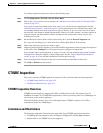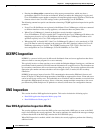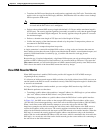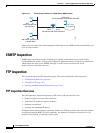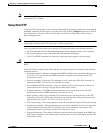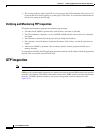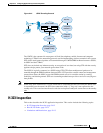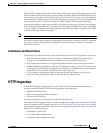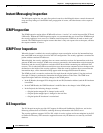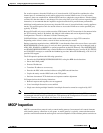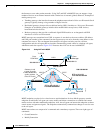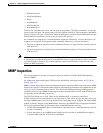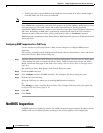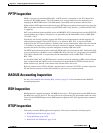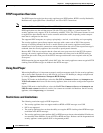
24-13
Cisco ASDM User Guide
OL-16647-01
Chapter 24 Configuring Application Layer Protocol Inspection
HTTP Inspection
The H.323 ITU standard requires that a TPKT header, defining the length of the message, precede the
H.225 and H.245, before being passed on to the reliable connection. Because the TPKT header does not
necessarily need to be sent in the same TCP packet as H.225 and H.245 messages, the security appliance
must remember the TPKT length to process and decode the messages properly. For each connection, the
security appliance keeps a record that contains the TPKT length for the next expected message.
If the security appliance needs to perform NAT on IP addresses in messages, it changes the checksum,
the UUIE length, and the TPKT, if it is included in the TCP packet with the H.225 message. If the TPKT
is sent in a separate TCP packet, the security appliance proxy ACKs that TPKT and appends a new TPKT
to the H.245 message with the new length.
Note The security appliance does not support TCP options in the Proxy ACK for the TPKT.
Each UDP connection with a packet going through H.323 inspection is marked as an H.323 connection
and times out with the H.323 timeout as configured on the Configuration > Firewall > Advanced >
Global Timeouts pane.
Limitations and Restrictions
The following are some of the known issues and limitations when using H.323 application inspection:
• Static PAT may not properly translate IP addresses embedded in optional fields within H.323
messages. If you experience this kind of problem, do not use static PAT with H.323.
• H.323 application inspection is not supported with NAT between same-security-level interfaces.
• When a NetMeeting client registers with an H.323 gatekeeper and tries to call an H.323 gateway that
is also registered with the H.323 gatekeeper, the connection is established but no voice is heard in
either direction. This problem is unrelated to the security appliance.
• If you configure a network static address where the network static address is the same as a
third-party netmask and address, then any outbound H.323 connection fails.
HTTP Inspection
Use the HTTP inspection engine to protect against specific attacks and other threats that may be
associated with HTTP traffic. HTTP inspection performs several functions:
• Enhanced HTTP inspection
• URL screening through N2H2 or Websense
• Java and ActiveX filtering
The latter two features are configured in conjunction with Filter rules.
The enhanced HTTP inspection feature, which is also known as an application firewall and is available
when you configure an HTTP inspect map (see the “HTTP Class Map” section on page 24-48), can help
prevent attackers from using HTTP messages for circumventing network security policy. It verifies the
following for all HTTP messages:
• Conformance to RFC 2616
• Use of RFC-defined methods only.
• Compliance with the additional criteria.



